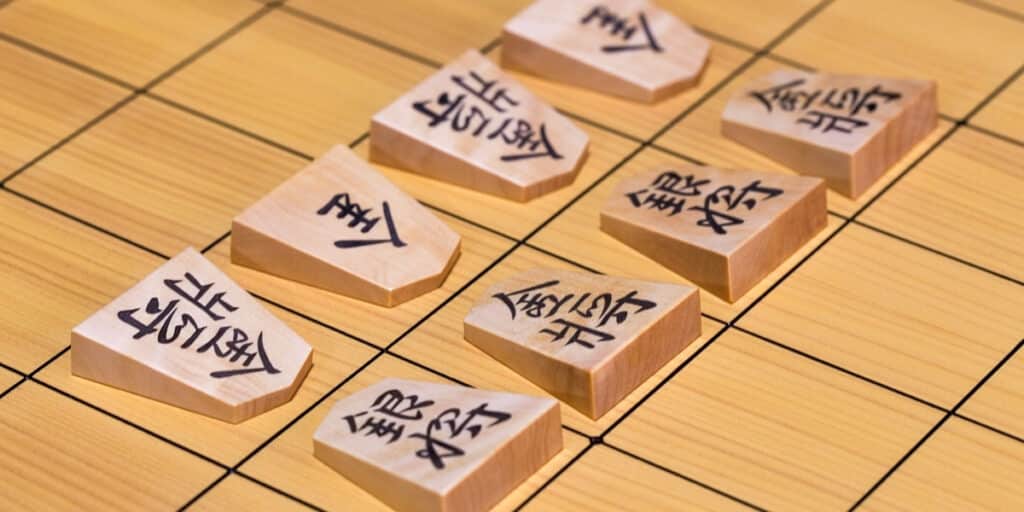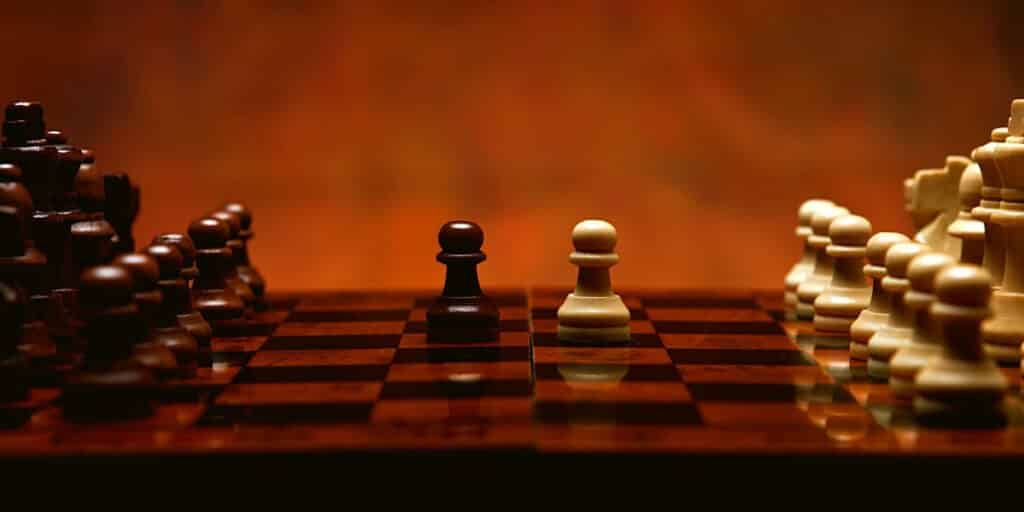Chess? Or, Shogi? Well now, that is a question. This is a debate worth a closer look. These two games of strategy are as similar as they are different, and in this article, we are going to look at those differences to understand them better.
Shogi vs. Chess

Which is your preference? If you are a Chess player and you’ve never played Shogi, you might enjoy the idea of dipping your toes into the world of Shogi, otherwise known as Japanese Chess, The Game of Generals.
On the other hand, if Shogi is where you park your strategic playing brain, it might be worth considering playing Chess, The Game of Kings.
To get a clearer picture of each game, it is important to first look at how similar they are.
Let’s have a closer look to see what those similarities and those differences are.
Similarities
- At a glance, you will notice that the playing boards appear similar—each with their respective squares or grids for pieces to be placed.
- Both Chess and Shogi are games of strategy designed for two players.
- Each game shares its winning phrase at the final move – Checkmate.
- The objective for both Shogi and Chess is simply to capture the opponent’s king.
- Even some of the pieces have shared names.
Pieces which share names are:
| Shogi | Chess |
| 1 King | 1 King |
| 1 Bishop | 2 Bishops |
| 2 Knights | 2 Knights |
| 1 Rook | 2 Rooks |
| 9 Pawns | 8 Pawns |
Differences
Where each game differs though, is as interesting as how they are the same.
- The boards, although similar, differ in size and color. With Chess, you have an 8 x 8 playing field or grid of squares of alternating colors of usually black and white, or dark and light.
- Shogi offers a match to be played on a 9 x 9 board with its spaces or grid of squares all claiming the same color across the board. There is no differentiation between one side or the other in this way.
- Chess is played with 16 pieces per player. Shogi has 20 pieces.
- Shogi’s pieces are not ornately carved figures like chess pieces, but are instead flat tiles.
- The name of the Shogi piece is written in kanji with its corresponding promotion title on its opposite side. Each tile has a pointed tip that always points towards the opponent.
- Shogi offers the option to promote a player’s pieces once they have reached the promotion zone, which is the three rows of the opposition’s starting point.
- In Shogi, an opponent’s captured pieces can be put back into play but as a piece for the opposition’s side, or the player who has captured it. In Chess, the piece is simply removed from the board.
- Each game is set up and looks different from the other but mostly with regards to the second, or middle row of pieces. Where the row is completely filled with pieces in Chess, Shogi only requires two squares used, one for a bishop and one a rook.
But appearances are not all that differs between these two games.
Want to learn how to play Shogi?
Moving the Pieces
It is worth noting that moves in Shogi are always forward-moving. In Chess, there are opportunities to move in any direction, depending on the pieces used.
While some of the pieces have the same name in both Chess and Shogi, their movement is almost always different.
- Pawns, for instance, move forward and capture in Shogi, whereas in Chess, they move forward but capture diagonally.
- In Shogi, the pieces always move forward, never backward.
- Rooks move the same in Shogi as they do in Chess. That being horizontally or vertically any number of spaces.
- Bishops move diagonally any number of squares in both games as well.
- Knights move similarly in Chess as they do in Shogi.
- Finally, the King moves the same in both. One square in any direction.
Advantages

Each game has its advantages and its disadvantages but this is certainly part of the appeal in both games.
If the board represents a battlefield and each side is competing to gain ground by winning the battle, playing to the disadvantages is as important as exploiting the advantages.
The limitations of the movement of some pieces allow for additional movement of others. This applies to both Chess and Shogi.
One of Shogi’s advantages is the option to reintroduce captured pieces into play. This creates a larger army, if you will, of pieces in which to protect and to conquer with.
Conversely, while the Chessboard is less complex in the number of pieces being played, it requires a different type of strategy to move forward to capture the King.
Strategic Differences

As touched upon above, the strategy is different from one game to the other. Yet, while the movements may be different, the boards may be bigger or smaller than the other; both require forward-thinking strategies.
Because Chess has a compelling piece- the Queen, the potential to devastate the board with her prowess is always significant and players must always bear her presence in mind.
Shogi does not offer a Queen, so requires its players to rely on other powerful figures, such as the Golden General. Although it can only move one space, four of the other pieces can be promoted to a Golden General.
This gives a strategic advantage simply because of the maneuverability of the pieces.
Shogi vs. Chess: Which is better?
Which is better? Who can say? This is subjective. We can say that with both Chess and Shogi, an appreciation of their complexities is sure to arise no matter your feelings towards the game.
Each has its own sort of fluidity and form in the manner they are played and each requires a different mindset or perspective than the other when playing.
Chess is a more circular game in that it allows more movement with its forwards and backward locomotions.
Shogi, with its ever forward thrust of movements gives it a sharper aggression but can require more moves than a chess game.
No matter your preference, we would suggest trying them both and compare them yourselves.
They are both beautifully fun games to play and in the end you will have learned something new with each game you play.
So, pull up a seat and play a game or two of strategy. You’ll be glad that you did.

